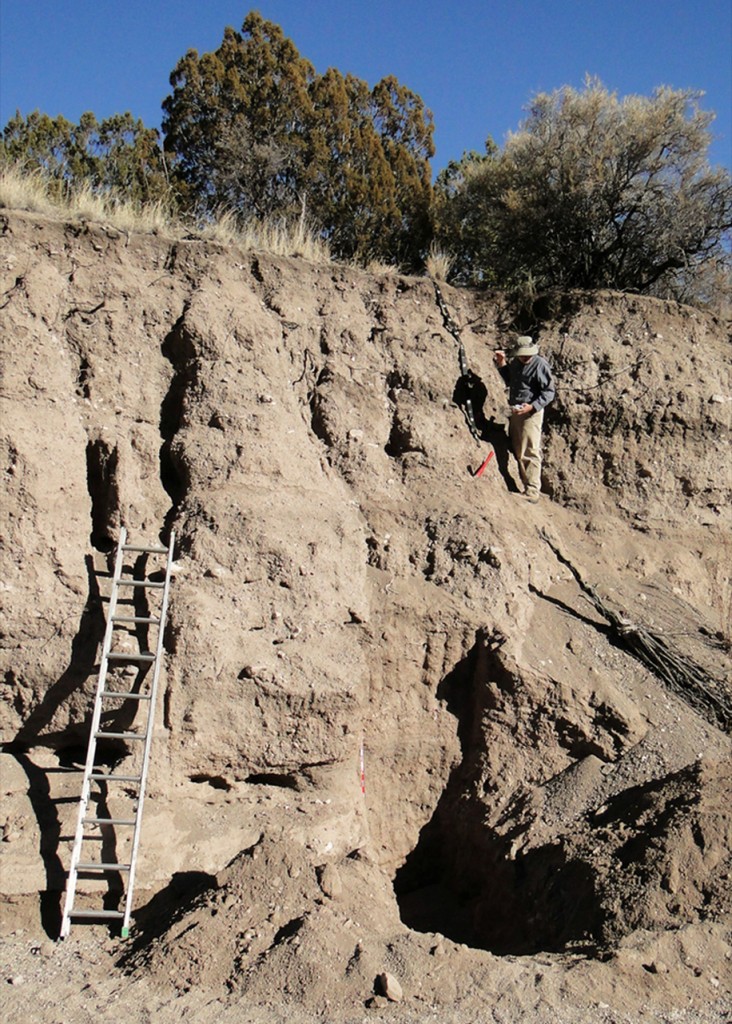All living things contain carbon. Carbon isotopes are left in the soil when plants die and they are divided between C3 and C4 plants. In general, C3 plants are cool-season grasses, trees, and shrubs like mesquite and creosote bush. C4 plants are warm-season grasses which include the species in the native grasslands in New Mexico, such as blue grama, black grama, and tobosa. As the climate has shifted from wet to dry and back again, grasses dominate during the wetter periods and shrubs dominate during drier periods.
At Cañada Alamosa, just below the Victorio Site is a high terrace cut by the floodwaters of the Rio Alamosa, exposing over 4000 years of accumulated sediment. At least two living surfaces at different levels contain charcoal and artifacts. Radiocarbon analysis has dated those surfaces to 2500 and 1900 years ago.
Soil samples were collected from the profile in 20 centimeter increments and carbon isotopes were extracted in the laboratory. The results allow the reconstruction of multiple sequences of wet and dry climatic periods over the last 3200 years by measuring the relative amounts of C4 and C3 isotopes left in the soil and comparing the results to evidence of erosion and filling in the soil profile.
1900 years ago shrubland dominated / 2500 years ago grassland dominated


